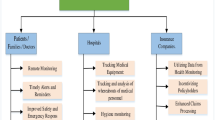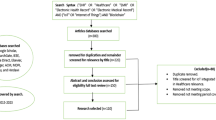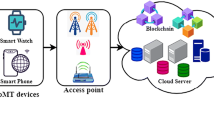Abstract
Telecare Medical Information System (TMIS) provides the flexible and convenient e-health care. It helps the patients to gain health monitoring information and provides patients to share their experience wirelessly. Traditional authentication and key agreement (AKA) protocols in TMIS are mostly considered in same-domain environment. However, future generation network may integrate various of wireless mesh networks under various domain. What’s more, patients heterogeneous cross-domain service has become an inevitable trend. However, there is still no heterogeneous cross-domain authenticated protocol between PKI-domain and IBC-domain in TMIS. In this paper, we propose a heterogeneous cross-domain AKA protocol with symptoms-matching in TMIS (short for CDAKA). It not only keeps good security features, but also truly provides patients’ anonymity to protect sensitive information from illegal interception. It still provides patients in two different domains to share their experience, broaden their understanding of illness by using their mobile device freely. Besides, it can realize AKA with extremely low computing cost and communication cost. What’s more, it is proved to be secure against known possible attacks under the Elliptic Curve Computable Diffie-Hellman problem (ECDHP) assumption in the random oracle model. Hence, these features make CDAKA protocol very suitable for mobile application scenarios, where resource is severely constrained and security is particularly concerned.





Similar content being viewed by others
References
Tonetti, M., Jepsen, S., Jin, L., et al., Impact of the global burden of periodontal diseases on health, nutrition and wellbeing of mankind: A call for global action. J. Clin. Periodontol. 44(5):456–462, 2017.
Yang, Y., Zheng, X., Liu, X., et al., Cross-domain dynamic anonymous authenticated group key management with symptom-matching for e-health social system. Futur. Gener. Comput. Syst. 84:160–176, 2017.
He, D., and Zeadally, S., Authentication protocol for an ambient assisted living system. IEEE Commun. Mag. 53:71–77, 2015.
Zhang, L., Zhang, Y., Tang, S., et al., Privacy protection for e-health systems by means of dynamic authentication and three-factor key agreement. IEEE Trans. Ind. Electron. 65(3):2795–2805, 2018.
He, D., Kumar, N., Wang, H., et al., A provably-secure cross-domain handshake scheme with symptoms-matching for mobile healthcare social network. IEEE Trans. Dependable Secure Comput. 13(9):1–13, 2016.
Yuan, C., Zhang, W., and Wang, X., EIMAKP: Heterogeneous cross-domain authenticated key agreement protocols in the EIM system. Arab. J. Sci. Eng. 42:3275–3287, 2017.
Wu, Z., Lee, Y., Lai, F., et al., A secure authentication scheme for telecare medicine information systems. J. Med. Syst. 36(3):1529–1535, 2012.
He, D., Cao, J., and Zhang, R., A more secure authentication scheme for telecare medicine information systems. J. Med. Syst. 36(3):1989–1995, 2012.
Wei, J., Hu, X., and Liu, W., An improved authentication scheme for telecare medicine information systems. J. Med. Syst. 36(6):3597–3604, 2012.
Zhu, Z., An efficient authentication scheme for telecare medicine information systems. J. Med. Syst. 36(6): 3833–3838, 2012.
Lee, T., Chang, I., Lin, T., et al., A secure and efficient password- based user authentication scheme using smart cards for the integrated epr information system. J. Med. Syst. 37(3):3833–3838, 2013.
Tan, Z., An efficient biometrics-based authentication scheme for telecare medicine information systems. Netw. 2(3):200–204, 2013.
Yan, X., Li, W., Li, P., et al., A secure biometrics-based authentication scheme for telecare medicine information systems. J. Med. Syst. 37(5):1–6, 2013.
Chaudhry, S., Naqvi, H., and Khan, M., An enhanced lightweight anonymous biometric based authentication scheme for TMIS. Multimed. Tools Appl. 77(5):5503–5524, 2018.
Amin, R., and Biswas, G., A novel user authentication and key agreement protocol for accessing multi-medical server usable in TMIS. J. Med. Syst. 39(3):1–17, 2013.
Das, A., Odelu, V., and Goswami, A., A Secure and robust user authenticated key agreement scheme for hierarchical multi-medical server environment in TMIS. J. Med. Syst. 39(9):1–24, 2015.
Liu, X., Li, Y., et al., PAKA: A lightweight pseudonym authentication and key agreement protocol for multi-medical server architecture in TMIS. KSII Trans. Internet Inf. Syst. 11(2):924–944, 2017.
Sun, Y., and Li, H., Efficient signcryption between TPKC and IDPKC and its multi-receiver construction. Sci. China Inf. 53(3):557–566, 2010.
Huang, Q., and Wong, D., Heterogeneous signcryption with key privacy. Comput. J. 54(4):525–536, 2011.
Karati, A., Islam, S., and Karuppiah, M.: Provably secure and lightweight certificateless signature scheme for IIoT environments. IEEE Trans. Ind. Inf. 1–11, 2018
Ma, M., He, D., Kumar, N., et al., Certificateless searchable public key encryption scheme for industrial internet of things. IEEE Trans. Ind. Inf. 14(2):759–767, 2018.
Li, Y., and Wang, C., Privacy-preserving multi-receiver signcryption scheme for heterogeneous systems. Secur. Commun. Netw. 9(17):4574–4584, 2016.
Li, Y., Chen, W., Cai, Z., et al., CAKA: A novel certificateless-based cross-domain authenticated key agreement protocol for wireless mesh networks. Wirel. Netw. 22(8):2523–2535, 2016.
Wang, C., Liu, C., Niu, S., et al.: An authenticated key agreement protocol for cross-domain based on heterogeneous signcryption scheme. In: 2017 13th International Wireless Communications and Mobile Computing Conference (IWCMC), pp. 723–728. IEEE, 2017.
Zhang, Q., Gan, Y., Zhang, Q., et al., A dynamic and cross-domain authentication asymmetric group key agreement in telemedicine application. IEEE Access 6:24064–24074, 2018.
Chen, Q., Shi, S., Li, X., et al.: SDN-based privacy preserving cross domain routing. IEEE Trans. Dependable Secure Comput. 1–13, 2018
Luo, M., Luo, Y., Wan, Y., et al., Secure and efficient access control scheme for wireless sensor networks in the cross-domain context of the IoT. Secur. Commun. Netw. 2018:1–10, 2018.
Al-Riyami, S., and Paterson, K.: Certificateless public key cryptography. In: International Conference on the Theory and Application of Cryptology and Information Security, pp. 452–473. Springer, Berlin, 2003.
Ma, M., He, D., Khan, M., et al., Certificateless searchable public key encryption scheme for mobile healthcare system. Comput. Electr. Eng. 65:413–424, 2017.
Kilinc, H., and Yanik, T., A survey of SIP authentication and key agreement schemes. IEEE Commun. Surv. Tutor. 16(2):1005–1023, 2014.
Wander, A., Gura, N., Eberle, H., et al.: Energy analysis of public-key cryptography for wireless sensor networks. In: Third IEEE International Conference on Pervasive Computing and Communications, PerCom, 2005.
Huang, D., Misra, S., Verma, M., et al., PACP: An efficient pseudonymous authentication-based conditional privacy protocol for VANETs. IEEE Trans. Intell. Transp. Syst. 12(3):736–746, 2011.
He, D., Zeadally, S., Kumar, N., et al., Efficient and anonymous mobile user authentication protocol using self-certified public key cryptography for multi-server architectures. IEEE Trans. Inf. Forensics Secur. 11(9): 2052–2064, 2016.
De Meulenaer, G., Gosset, F., Standaert, F. X., et al.: On the energy cost of communication and cryptography in wireless sensor networks, pp. 580–585, 2008.
Funding
This study was funded by National Science Foundation of China under grant (61373171), The 111 Project under grant(B08038), National Key R&D Program of China(2017YFB0802400).
Author information
Authors and Affiliations
Corresponding author
Ethics declarations
Conflict of interest
Author Xiaoxue liu declares that she has no conflict of interest. Author Wenping Ma declares that he has no conflict of interest.
Ethical approval
This article does not contain any studies with human participants performed by any of the authors.
Additional information
This article is part of the Topical Collection on Mobile & Wireless Health
Rights and permissions
About this article
Cite this article
Liu, X., Ma, W. CDAKA: A Provably-Secure Heterogeneous Cross-Domain Authenticated Key Agreement Protocol with Symptoms-Matching in TMIS. J Med Syst 42, 135 (2018). https://doi.org/10.1007/s10916-018-0985-7
Received:
Accepted:
Published:
DOI: https://doi.org/10.1007/s10916-018-0985-7




